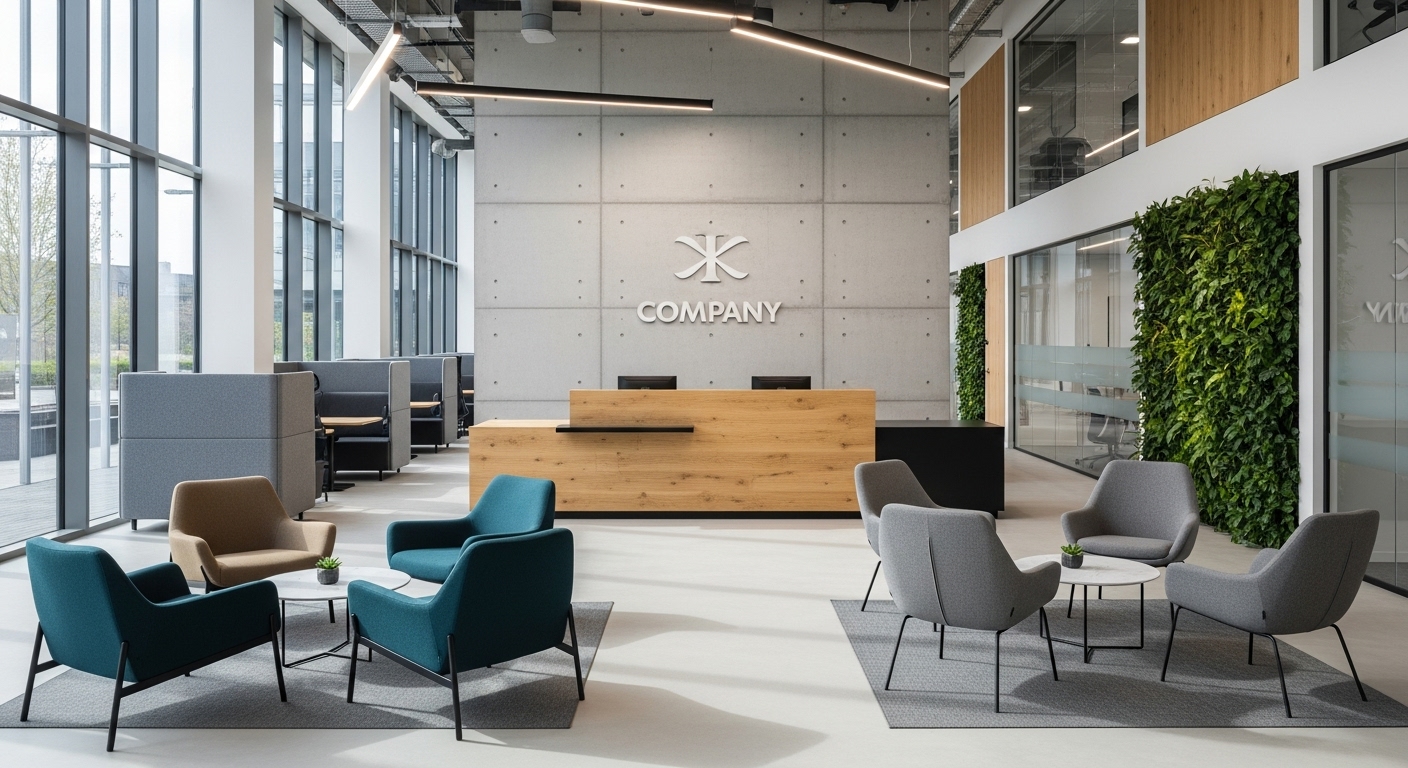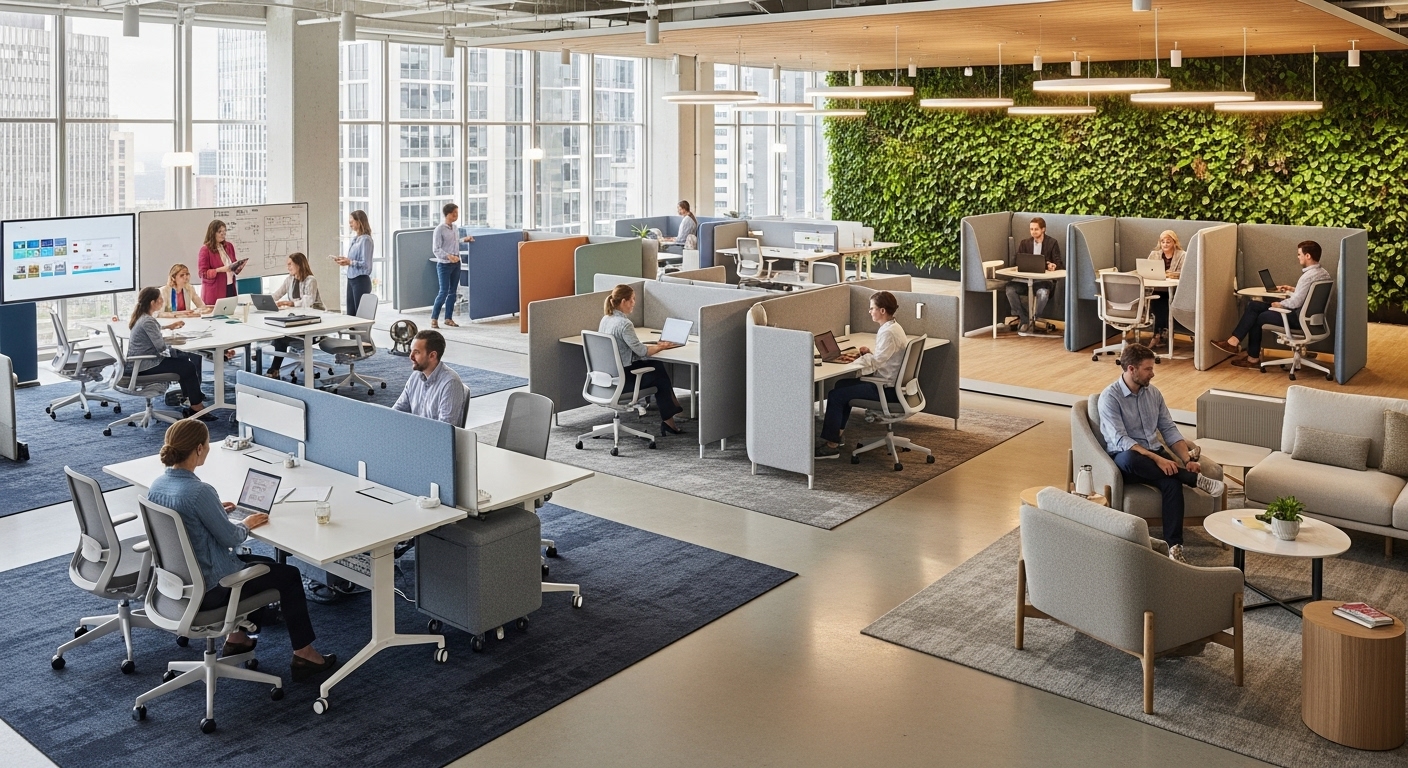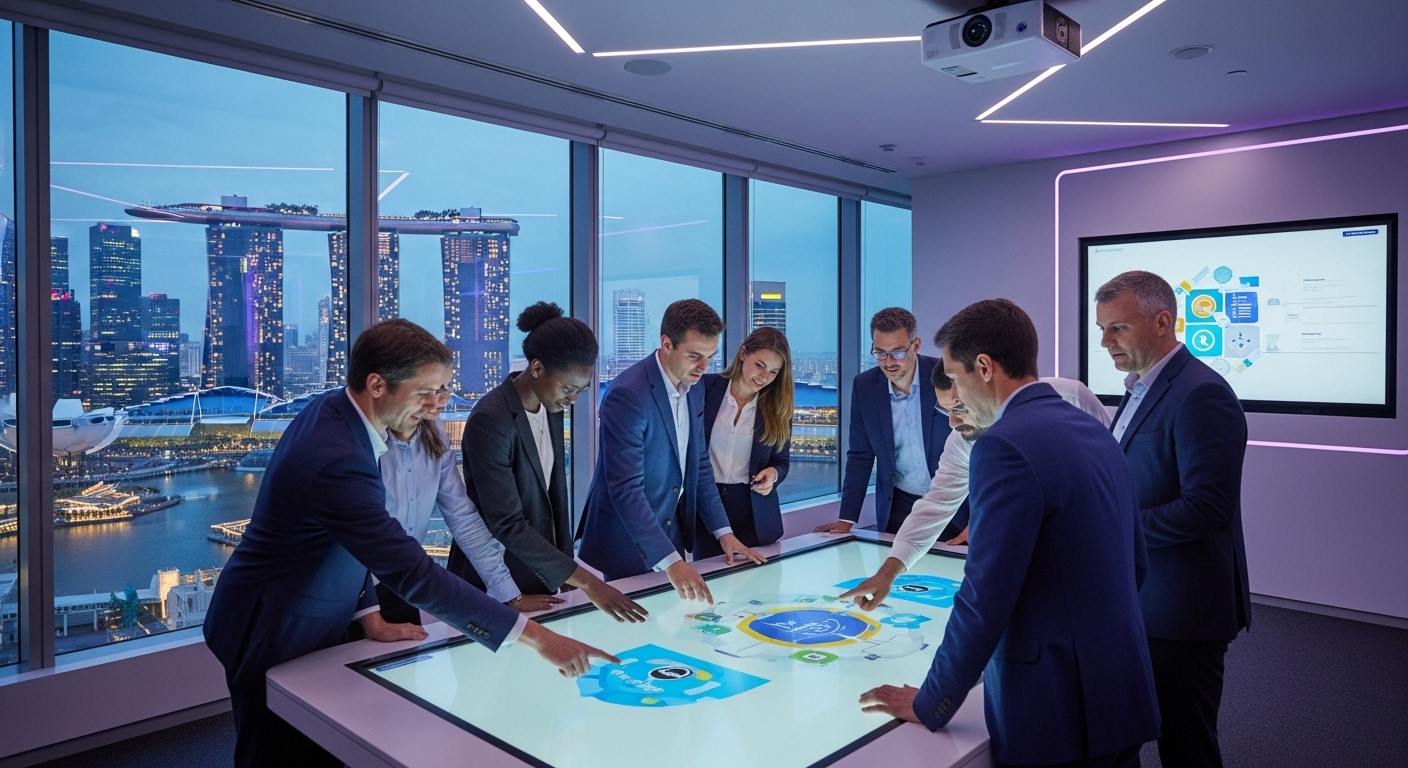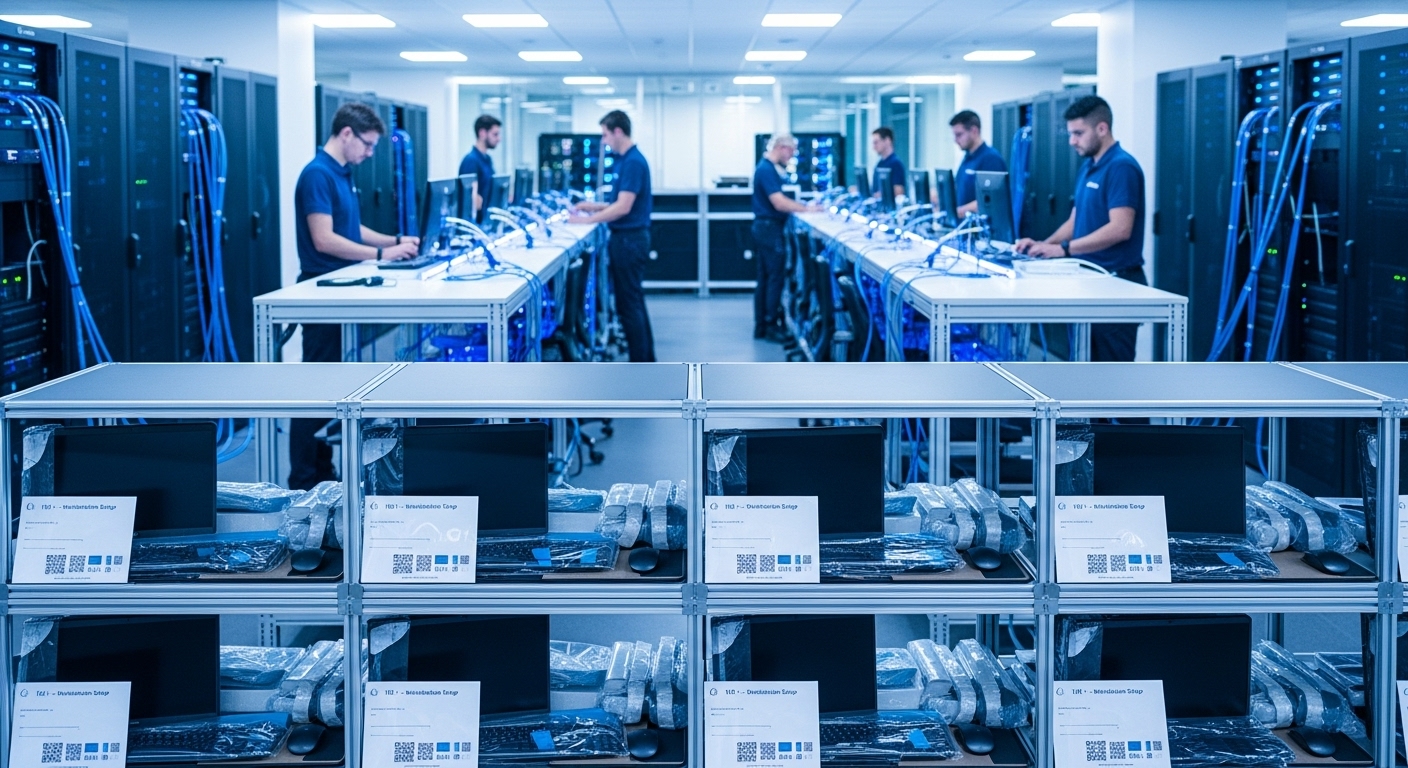In an increasingly digital world, the power of a physical space is more potent than ever. Your brand is no longer just a logo, a color palette, or a clever tagline; it’s an immersive experience. While companies invest heavily in their digital storefronts, the physical environment—the office, the retail store, the showroom—is often a missed opportunity to tell a compelling brand story. Recent trends in experiential marketing highlight a shift towards creating memorable, multi-sensory interactions. Branding your space is about architecting authenticity, translating your company’s core values and personality into a tangible atmosphere that employees and customers can feel, see, and interact with. This is where design meets logistics. It’s a strategic process of embedding your brand’s DNA into every corner, from the texture of the walls to the flow of foot traffic. This guide will walk you through the essential steps, from defining your brand’s physical philosophy to managing the practical logistics of its implementation, ensuring your space becomes your most powerful brand asset.
1. The Philosophy of Space: Why Your Physical Environment is Your Brand’s Loudest Voice
Before a single can of paint is opened or a piece of furniture is ordered, it’s crucial to understand the philosophy of your space. Your physical environment communicates volumes about your brand non-verbally. It is a constant, ambient storyteller that shapes perceptions and influences behavior. For employees, the office environment is a daily reinforcement of company culture. A space designed with open, collaborative zones, breakout areas, and flexible workstations screams innovation, teamwork, and trust. Conversely, a layout of cloistered individual offices with heavy doors might communicate hierarchy, tradition, and formality. This environmental messaging directly impacts morale, productivity, and talent retention. For customers, a physical space is the embodiment of the brand promise. Think of an Apple Store’s clean, minimalist, and accessible design, which mirrors the user-friendly nature of its products. This alignment builds trust and makes the brand feel cohesive and authentic. The psychological impact is profound. Colors, lighting, materials, and spatial arrangement all work together to evoke specific emotions. Warm lighting and soft textures can create a sense of comfort and luxury, while bright lights, bold colors, and industrial materials can signal energy and cutting-edge thinking. Your space is not merely a container for business operations; it is an active participant in your brand strategy. By consciously designing this environment, you are taking control of the narrative and ensuring that the loudest voice in the room is unequivocally and authentically yours.
2. Decoding Your Brand DNA: The Foundation of Physical Identity
The process of branding your space begins with deep introspection, not a Pinterest board. You must first decode your brand’s DNA to create a blueprint for its physical manifestation. This foundational step ensures that your design choices are not arbitrary but are deeply rooted in your core identity. Start by asking fundamental questions: What are our unshakable core values? What is our mission? What is our unique brand personality—are we playful, authoritative, innovative, traditional, minimalist, or rustic? Write these attributes down. For example, a brand that values ‘sustainability’ will make vastly different material choices than one that values ‘opulent luxury’. A brand personality that is ‘bold and energetic’ will use a different color and lighting palette than one that is ‘calm and focused’. Once you have your list of attributes, create a ‘mood board’ for each one. How does ‘transparency’ look and feel? Perhaps it translates to glass walls, open-plan layouts, and clear, honest materials. How do you physically represent ‘community’? This could mean a large central café, communal tables, and spaces designed for spontaneous interaction. This exercise moves you from abstract concepts to tangible design cues. A financial institution aiming to project trust and stability might choose classic materials like marble, dark wood, and brass, with an orderly and symmetrical layout. In contrast, a tech startup aiming to project innovation and disruption might opt for raw concrete, exposed ductwork, flexible furniture, and vibrant, artistic murals. This is the critical translation phase where your brand’s soul is given a physical form.
3. The Sensory Palette: Engaging More Than Just the Eyes
An authentically branded space engages all the senses to create a truly immersive experience. While visual design is paramount, relying on it alone leaves a significant opportunity on the table. A multi-sensory approach deepens the connection to your brand and makes the environment far more memorable. Start with touch, or haptic feedback. Consider the textures of the materials you use. The cool, smooth surface of a marble countertop, the rough-hewn texture of a reclaimed wood feature wall, the soft plushness of a velvet armchair—each tells a different story. These tactile elements should align with your brand’s personality. Sound is another powerful, yet often overlooked, element. The ambient soundscape can dramatically alter the mood. A curated music playlist can inject energy or create a relaxed atmosphere. The acoustics of the space also matter; using sound-dampening materials in specific zones can create quiet areas for focused work, reinforcing a value for employee well-being. Scent is directly linked to memory and emotion. Signature scents, used subtly in HVAC systems or diffusers, can become an unconscious brand signifier. A luxury hotel might use a sophisticated and calming scent, while a retail brand focused on nature might use notes of cedar or pine. Finally, taste can even be incorporated through a thoughtfully designed café or hospitality station, offering beverages or snacks that reflect the brand’s character—healthy and organic, or indulgent and fun. By orchestrating this sensory palette, you move from simply decorating a space to creating a holistic brand world that people don’t just see, but truly feel.
4. Strategic Signage and Wayfinding: Guiding the Experience
Signage and wayfinding systems are the functional backbone of a branded environment, but their role extends far beyond simple direction-giving. They are the narrative threads that guide visitors and employees through your space, reinforcing the brand story at every touchpoint. Effective wayfinding is intuitive and seamless, reducing stress and making the space feel welcoming and well-managed—qualities that reflect positively on your brand. The design of the signage itself is a critical branding opportunity. The typography, color palette, materials, and iconography used should be a direct extension of your brand’s visual identity guide. A law firm might use engraved brass plaques for an air of permanence and prestige, while a children’s daycare might use playful, rounded fonts and colorful pictograms. The key is consistency. The sign on the front door should feel related to the directional signs in the hallway and the labels on individual rooms. Beyond functionality, use signage to inject personality and reinforce values. You can name meeting rooms after company heroes, industry innovators, or core values. Wall graphics and murals can tell the company’s history, showcase its mission, or display customer testimonials. As one expert from a leading design firm noted:
‘Good wayfinding is like a quiet, helpful concierge. It anticipates your needs and guides you effortlessly. When it’s infused with brand personality, it turns a simple journey through a building into an engaging part of the brand experience.’
Strategic placement is just as important as design. Consider the entire user journey, from the parking lot to the final destination. Each sign should be placed at a decision point, ensuring a clear and logical flow. This meticulous attention to detail demonstrates a high level of care and professionalism, subtly communicating that your brand is thoughtful, organized, and client-focused.
5. Furnishing the Brand: Selecting Furniture and Decor with Purpose
Furniture and decor are not mere afterthoughts; they are the primary tools you use to shape how people interact with your space and, by extension, your brand. Every chair, desk, lamp, and piece of art should be selected with purpose, supporting both the functional needs of the space and the narrative of your brand. The style of furniture is a powerful communicator of personality. Are you sleek, modern, and minimalist, opting for chrome, glass, and clean lines? Or are you warm, rustic, and comfortable, choosing natural woods, soft textiles, and handcrafted pieces? The choices you make should be a direct reflection of the Brand DNA you decoded earlier. Functionality is intrinsically linked to this. An organization that prides itself on collaboration should invest in modular furniture, large communal tables, and comfortable lounge areas that encourage spontaneous meetings. A company that values deep, focused work needs to provide ergonomic chairs, acoustically private workstations, and adjustable desks. The layout and selection of furniture dictate behavior and either support or contradict your stated company culture. Decor items, such as artwork, plants, and accessories, are where you can add layers of personality and storytelling. Art selections can reflect the brand’s connection to the local community, its innovative spirit, or its sophisticated taste. Biophilic design—the integration of natural elements like plants and water features—can signal a brand’s commitment to wellness and sustainability. Every object should earn its place. Ask yourself: Does this piece support our brand story? Does it enhance the desired atmosphere? By curating your furniture and decor with intention, you create a cohesive environment where every element works in concert to express your brand identity, making the space not just look the part, but live it.
6. The Logistics of Transformation: From Blueprint to Reality
Having a brilliant design concept is one thing; executing it on time and within budget is another. The logistics of transforming your space are where your strategic vision meets the real world of project management, vendors, and timelines. This phase requires meticulous planning to ensure a smooth transition from blueprint to a beautifully branded reality. The first step is to create a comprehensive project brief. This document is the master guide for all partners and stakeholders, and it should include your brand DNA analysis, mood boards, specific design requirements, material preferences, a detailed floor plan, and, critically, your budget and timeline. A clear brief prevents misunderstandings and keeps everyone aligned with the strategic goals. Next is vendor selection. You will likely need to coordinate with multiple partners, including architects or interior designers, general contractors, furniture suppliers, signage manufacturers, and IT installers. Vet these partners carefully. Review their portfolios to see if their style aligns with your vision, and check references to gauge their reliability and professionalism. It is crucial to select partners who understand the concept of environmental branding and see themselves as brand custodians, not just suppliers. Budgeting must be realistic and should include a contingency fund (typically 10-15%) for unexpected issues. Break down the costs into categories: design fees, construction/renovation, furniture, technology, signage, and decor. Finally, create a phased implementation plan, especially if you are renovating an active workspace. This plan should map out the entire process, from demolition to final installation, scheduling work to minimize disruption to your daily operations. Clear and constant communication with your team is essential throughout this phase to manage expectations and celebrate milestones. Meticulous logistical planning is the unseen framework that supports a successful brand transformation, ensuring your authentic new environment is realized without derailing your business.
Conclusion
Branding your space is a profound act of identity creation that transcends mere interior design. It is the strategic process of ‘architecting authenticity’—building a physical environment that is a true, three-dimensional extension of your brand’s soul. As we’ve explored, this journey begins not with colors and furniture, but with a deep understanding of your brand’s core philosophy and DNA. By moving from this foundation to a multi-sensory design palette, you can craft an experience that is deeply engaging and memorable for both your internal team and your external customers. Every element, from the strategic placement of wayfinding signage that guides the user journey to the purposeful selection of furniture that dictates interaction, becomes a storyteller. This meticulous approach turns a passive backdrop into an active participant in your brand’s narrative, reinforcing your culture, values, and promise at every turn. The final, critical piece is the logistical execution, which ensures your vision is brought to life efficiently and effectively. Ultimately, a well-branded physical space is one of the most powerful and authentic marketing tools at your disposal. It offers a constant, immersive reinforcement of who you are as a company, building loyalty, fostering culture, and creating a lasting impression that no digital campaign can replicate. Look around your environment; it is a blank canvas waiting to tell your story.





